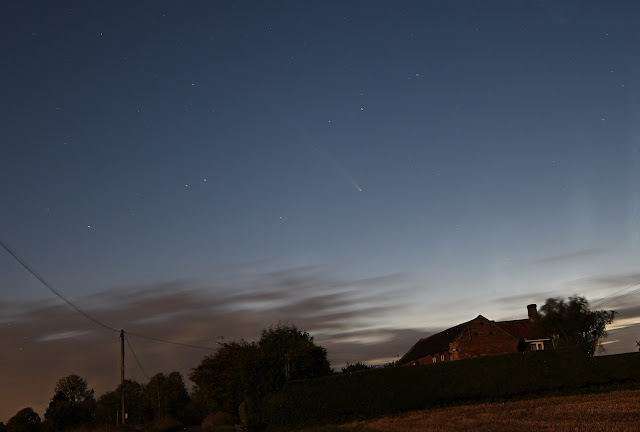Having repositioned the guidescope further foward to allow easier connectability for the Canon. A complete rebalance was required after realligning the scopes. Altair was bright in the east and a suitable candidate for practicing on. Guidescope in perfect sync to the canon so I ran a test of 2 each of one two five and ten minute exposures at ISO 800. The ten minute was very bright and I did think that it would be unusable but no it stacked along with the others to produce a 36 minute guided image of α Aquilae our 12th closest star to us Altair at 16.7 light years it is one of the closest stars to be directly imaged. Altair is an A type main sequece star that's nearly double our suns size but an increase in luminosity of approx 11 times.

Altair possesses an extremely rapid rate of rotation; it has a rotational period of
approximately 9 hours. For comparison, the equator of the sun requires just over 25 days for a complete rotation. This rapid rotation forces Altair to be oblate, its equatorial
diameter is over 20 percent greater than its polar diameter. Below image
False-color image of the rapidly rotating star Altair, made with the MIRC imager on the
CHARA array on
Mt. Wilson

Image from Wikipedia
 Altair possesses an extremely rapid rate of rotation; it has a rotational period of
Altair possesses an extremely rapid rate of rotation; it has a rotational period of 



No comments:
Post a Comment